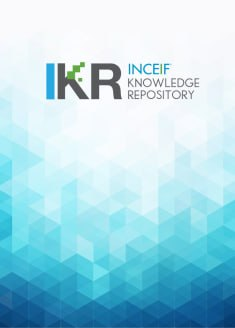
Browse by Author "Abdou Diaw"
Results Per Page
Sort Options
- PublicationIncentive-compatible sukuk musharakah for private sector fundingAbdou Diaw; Ahcene Lahsasna; Obiyathulla Ismath Bacha (ISRA, 2012)
Despite the huge potential on both the demand and supply sides of the sukuk market, the current sukukstructures fall short of adequately meeting the market’s needs as the Shari'ah compliance of many of them and/or their economic efficiency are questionable. Even though partnership-based sukuk are claimed to reflect the true spirit of Islamic finance, their underuse as a financing instrument is a notable fact. Such a situation, if not addressed, will impede the development of the sukuk market in the future. This paper proposes an innovative sukuk musharakah model for consideration by companies and revenue generating infrastructure projects. The model has an incentive-compatible feature by making the share of the issuing entity in the profit positively related to its performance in addition to a convertibility clause. The sector Return on Equity (ROE), adjusted with the firm beta, is considered a benchmark for measuring the performance of the firm. The paper examines the design of the model, its risk return profile as well as its pricing for secondary market trading.
- PublicationPerformance of Islamic and conventional exchange traded funds in MalaysiaAbdou Diaw; Salwana Hassan; Ng Adam Boon Ka (ISRA, 2010)
ETFs have attracted many investors as one of the most innovative products of financial engineering. By virtue of the nascent nature of MyETF-DJIM Titan 25 and FBM 30ETF in Malaysia, comparative performance studies are essential during a financial crisis. MyETF is different from FBM 30ETF in terms of investment scope and Shariah governance structure. While MyETF has achieved its objective in tracking its index, FBM 30ETF has failed in this respect. Despite its higher total risk, MyETF performed better than its index. The same applies in the case of FBM 30ETF. Although MyETF has bigger net assets, economies of scale, and better diversification, the performances of the two funds are lacklustre and similar, with FBM 30ETF performing somewhat better. Notwithstanding their success to outperform their respective benchmarks, both ETFs had comparable negative performance, with decline in prices and NAV. The negative returns have caused abnormality in their measurements.
- PublicationPerformance/commodity-linked sukuk for private and public sector funding: some proposed modelsAbdou Diaw; Obiyathulla Ismath Bacha; Ahcene Lahsasna (INCEIF, 2011)
Current sukuk structures often fall short of adequately meeting the Shariah conscious investors' needs. The objective of this dissertations is, therefore, to address this issue by conceptualizing and operationalizing three innovative models of sukuk. The first proposed model of sukuk is based on the concept of musharakah and is meant for companies and revenue generating infrastructure projects. The model has an incentive-compatible feature by making the share of the issuing entity in the profit positively related to its performance ...
- PublicationPublic sector funding and debt management: a case for GDP-linked sukukAbdou Diaw; Ahcene Lahsasna; Obiyathulla Ismath Bacha (Institute Research and Training Institute (IRTI), 2014)
Despite the huge amount of wealth in the hand of Muslims, most countries with Muslim majority population fall in the category of developing nations. The development of infrastructure has been proven to be an effective means for economic growth and poverty reduction. Usually governments have recourse to conventional debt financing to undertake infrastructure projects. However, this form of financing is unsuitable in an Islamic framework due to the prohibition of interest. Moreover, the recurrent sovereign debt crises over the last few decades stresses the importance of debt management that helps avoid the high costs of these forms of catastrophe. Debt indexation to some indicators from the real economy (like GDP or Commodity price) has been identified as an effective means for the reduction of sovereign default. Such an idea has the property of strengthening the linkage between the real and the financial sectors of the economy and allows risk sharing between the parties involved in the transaction. In spite of the convergence of such an idea with the spirit of Islamic finance, the Ṣukūk market has not yet taken advantage of it.
Abstract View
2677124
View & Download
198979
